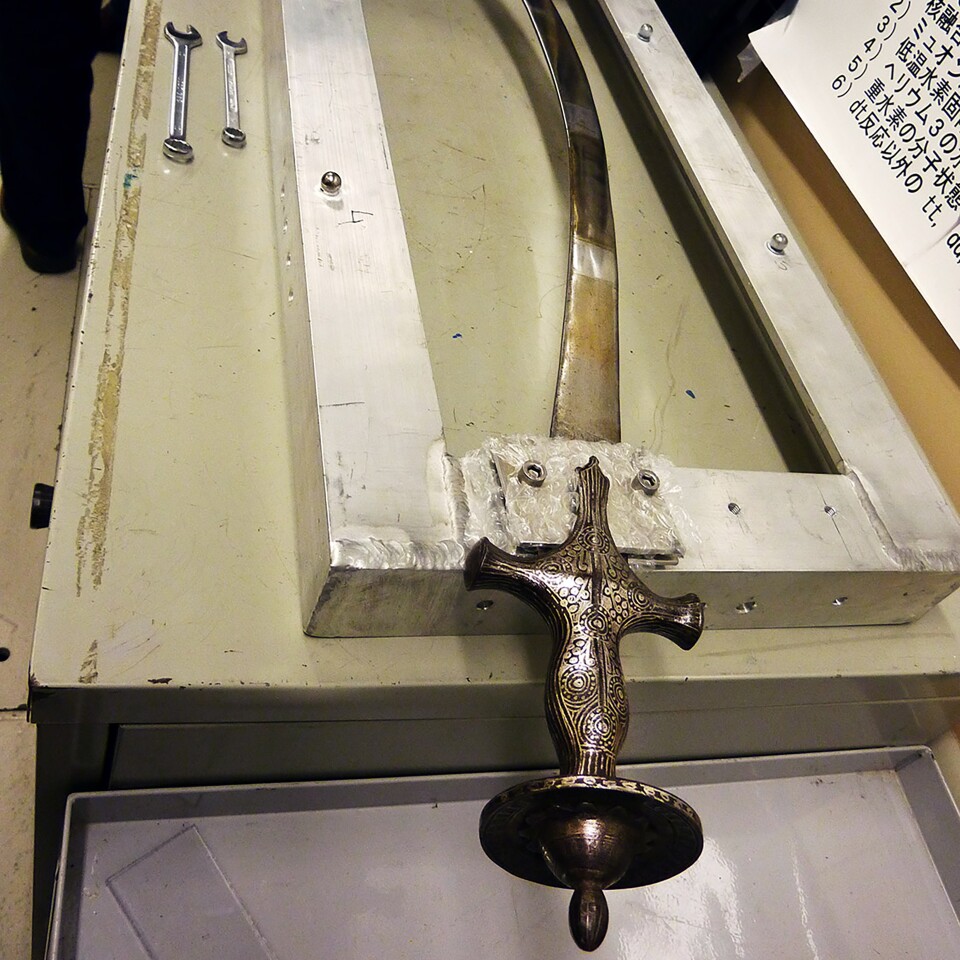A team from the UK's Science & Technology Facilities Council (STFC) has used neutron diffraction techniques to study the composition of a 200 year old Indian shamsheer sword. The non-destructive study, which revealed details of how the weapon was constructed, would not have previously been possible due to the rarity of the object.
The STFC observations were carried out by a team of scientists from the UK and Ireland. The subject was a 75 cm (29.5 inch) shamsheer sword from the Wallace Collection in London, a curved single-edged Indian blade more than 200 years old.
The team used neutron scattering to determine the structure of the metal. The process, known as neutron diffraction, involves placing the material in a beam of the particles and studying the resulting pattern.
Two of the STFC’s ISIS instruments – the ENGIN-X and INES – were used to study the strain within the material, and its composition and microstructure. The ENGIN-X instrument is routinely used to test engineering components including train wheels and aircraft wings.

The results showed that the blade was constructed using high quality wootz steel with a high carbon content and very few impurities. The forging technique was slightly different for the upper and lower parts of the blade, and the metal was not plunged into water during construction, but was instead given time to cool slowly. It exhibits a band-like pattern, a tell tale sign that the craftsman allowed the blade to cool slowly before shaping it a lower temperature.
"Experiments like these are necessary to study the history of science, and to learn what technology was known at different points in history and different cultures," stated Dr Joe Kellehar, an instrument scientist for ENGIN-X, on the significance of applying modern techniques to delicate historical artefacts, especially those related to warfare, which is itself a key driving force behind historical technological development. "The craftsmen often did not record their methods and in some cases actively protected their trade secrets."





